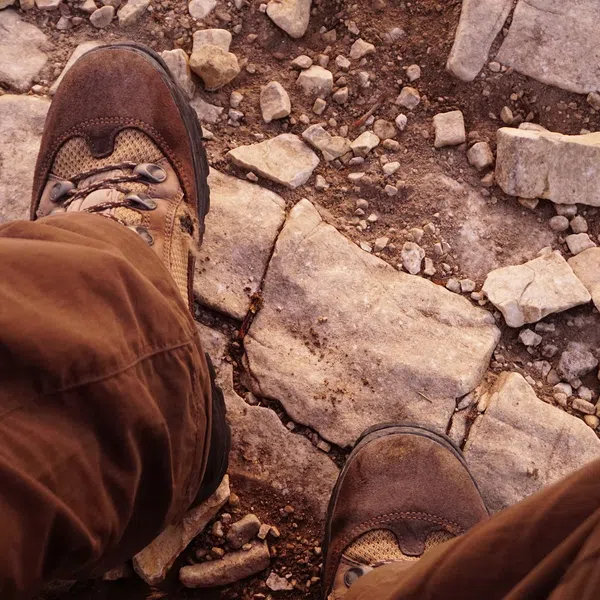Foot blisters (ampollas in Spanish) are a tiny collection of fluid beneath the outer layer of the epidermis. They are caused by the continuous rubbing of the foot with the shoe while walking and encouraged by dehydration or excessive sweating.
Blisters are among the most common inconveniences of those who walk the Pilgrim's Way to Santiago, especially among those who have sensitive foot skin or are not used to walking continuously for many hours a day. To avoid incurring this annoying inconvenience, it is advisable to follow these steps:
- Use comfortable, previously used, waterproof and breathable shoes: keeping your feet dry and having well-worn shoes minimises foot-shoe friction.
- Choose hiking socks reinforced at the toe and heel.
- Sprinkle your foot with vaseline, either before you start walking or in the evening: this will leave your foot soft and help reduce friction between the foot and the sock.
- Drink plenty of water while walking to help your body and feet stay hydrated.
Vesciche ai piedi da sfregamento lungo il Cammino
COMPEED® type protective plasters can be useful when you perceive that a blister is forming on your feet, but it has not yet matured. They act as a "second skin", providing rapid relief from pressure and friction. Their hydrocolloid membrane acts as an outward protection, while the part in contact with the skin absorbs blister fluid, preventing infection and facilitating wound healing. These plasters are not at all indicated if the bladder is already formed, i.e. swollen with fluid. They are also not indicated on wounds and over living skin.
Wash the foot well and if possible soak it in a basin with water and salt.
Take a sewing needle, sterilise it by burning the tip with the flame of a lighter or a cooker. Insert a thread and pierce the blister crosswise, taking care to leave the thread inside it which will act as a drain, allowing the liquid to escape. Finally disinfect with tincture of iodine (Betadyne for example) and apply sterile gauze to the blister. Keep the blister clean, disinfect it and change the gauze at least once a day. When the blister is dry and free of fluid, carefully remove the drainage wire.
